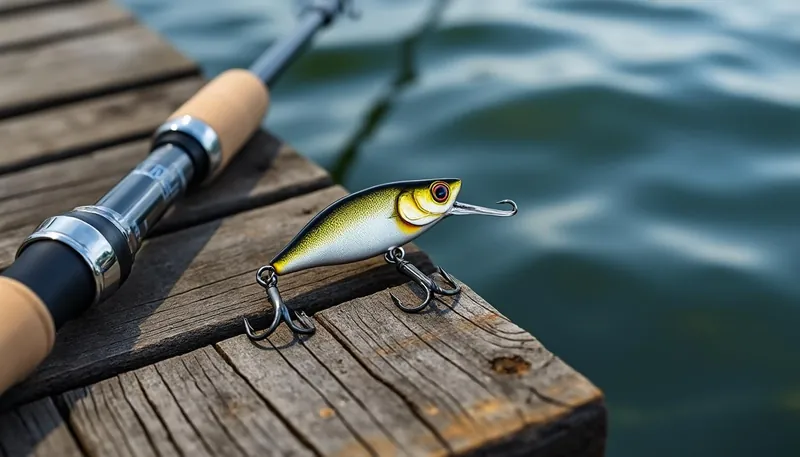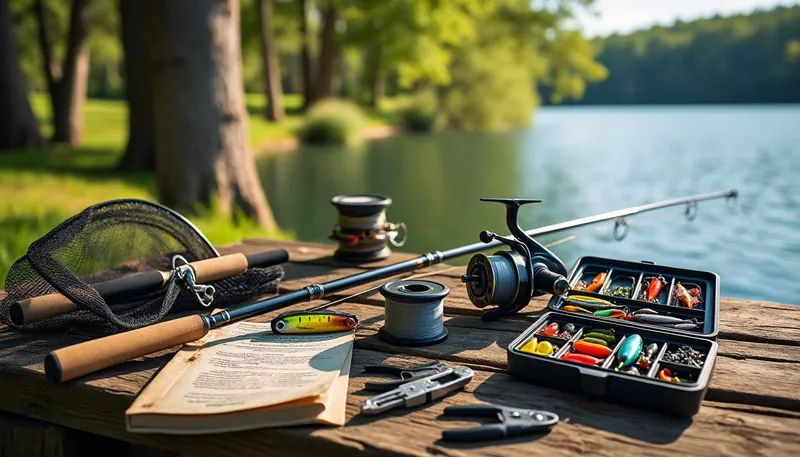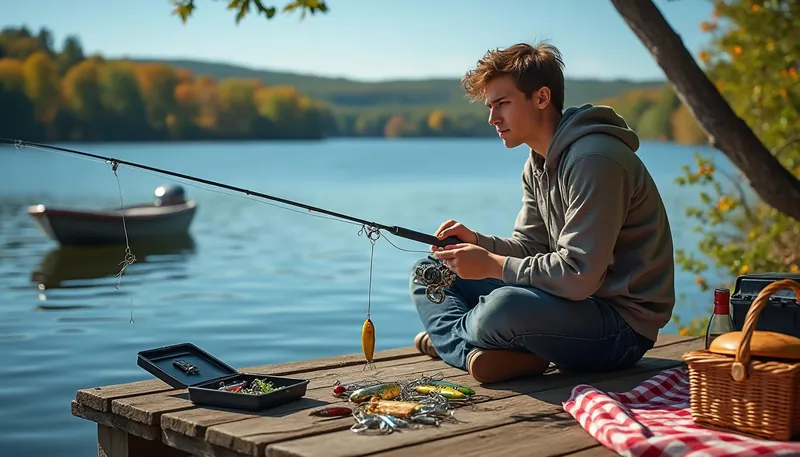Jig heads are one of those underrated tools in an angler’s arsenal that can make all the difference on a fishing trip. They’re simple in design yet incredibly effective, blending weight and a hook into one compact package. Picture it as the backbone of your tackle box: versatile, effective, and suitable for both beginners and seasoned pros alike. Whether you’re flipping docks, targeting bass in freshwater, or even trying your luck in saltwater, jig heads have got your back. Understanding how to utilize them effectively alongside various soft plastics can take your fishing game up a notch.
In the world of fishing, having the right equipment can massively influence your success rate. The evolving fishing landscape means that techniques and tools are constantly being honed and specialized for optimum performance. As you delve into the specifics of jig heads, you’ll discover there are multiple styles tailored to different conditions, comprising a diverse world of techniques to master. So, let’s dive into these unique tools that have earned their place as must-haves in every angler’s toolkit.
Brief
- Jig heads are weighted hooks designed for various fishing scenarios. 🎣
- There are different styles, including round, football, swim, and finesse jig heads. ⚽
- Picking the right jig head depends on factors like target species and water depth. 🌊
- Soft plastic bait combinations, like those from Berkley or Z-Man, enhance effectiveness. 🦐
- The versatility of jig heads allows for use in both freshwater and saltwater fishing. 🌅
Understanding the Jig Head: Definition and Functionality
What exactly is a jig head? Think of it as a cleverly designed fishing lure that seamlessly combines a hook and weight into one handy piece of equipment. The head shape can vary – round, football, or bullet-shaped – tailored to function efficiently in different environments. This ensures that the head aids in sinking the bait to the desired depth while simultaneously maintaining stability and movement in the water. It mimics how a baitfish or crawfish might behave, enticing predators to strike. This jigging motion can significantly increase your chances of making a catch.
When using a jig head, the angler can expect a vertical bait presentation. This differs from many traditional hooks that work horizontally in the water. Well-prepared jig heads will provide an up-and-down motion, imitating the struggle of live prey, which is irresistible to predatory fish. The sinking action combined with the rise and fall rhythm is what often leads to that exhilarating hookset moment.

Types of Jig Heads and Their Applications
You might be wondering what kind of jig heads are out there. Here’s an overview of various styles and how they shine in the fishing world:
- Round Jig Heads: These are the classics, perfect for casual fishing trips. Their smooth design facilitates a straightforward sinking path, making them ideal for almost any fishing situation.
- Football Jig Heads: Best known for their stability on rocky bottoms, football jig heads allow lures to glide smoothly along without tipping over. They work wonders for bass fishing!
- Swim Jig Heads: Designed for a steady, slow retrieve through the water, these jig heads are typically shaped like bullets to imitate swimming baitfish.
- Stand-Up Jig Heads: These are primarily used in finesse tactics, resting upright on the bottom and making it easier to target fish lurking near bedrock or sand.
- Finesse Jig Heads: Smaller and lighter, these heads are crafted for when fish are more reserved, using smaller soft plastics to wriggle enticingly in the water.
Each type has its charm, and it often comes down to preference and fishing style. Some anglers swear by specific heads depending on the species they are targeting. For example, a round jig head might be the better choice when chasing species like crappie, while a finesse jig is great for finicky bass or panfish.
| Jig Head Type | Best Use | Ideal Conditions |
|---|---|---|
| Round Jig Head | General Fishing | All environments |
| Football Jig Head | Bass Fishing | Rocky Bottoms |
| Swim Jig Head | Baitfish Imitation | Calm Waters |
| Stand-Up Jig Head | Finesse Techniques | Deep or Structured Waters |
| Finesse Jig Head | Light Line Fishing | Clear Water |
Selecting the Right Jig Head for Your Fishing Adventure
Choosing the appropriate jig head isn’t merely about looks; it’s a critical aspect that can dictate success. As simple as it might appear, there are a few factors you should consider:
- Target Species: Larger fish often respond better to heavier jig heads, while smaller species are more prone to lighter options. Understanding your target is key! 🎯
- Water Depth: If you’re fishing in deep holes, you will want to opt for heavier jig heads that get your bait down quickly. Conversely, light ones work well in shallow settings where you want more finesse.
- Bottom Composition: Assessing the bottom where you are fishing can help determine your jig head style. Football or stand-up jig heads excel on rocky or uneven surfaces, while round heads do well in most conditions.
- Type of Soft Plastic: Pairing the right jig head with the correct bait, whether it’s a Berkley PowerBait or a Z-Man creature bait, can enhance your chances of a successful catch.
This thoughtful selection process can influence both your immediate success on the water and cultivate a deeper understanding of fish behavior. Additionally, experimenting with various styles across different fishing environments can lead to greater adaptations and eventual mastery of jig head fishing.
Mastering Rigging Techniques with Jig Heads
Not every angler knows how to properly rig a jig head, and this integral skill can often be the difference between a successful day on the water and one filled with missed opportunities. Learning how to tie hooks and add bait correctly can amplify your efforts:
Tying on Hooks
When rigging a jig head, start by choosing the appropriate hook type. Barbless hooks are often preferred for easier removal from fish mouths without causing harm. Thread your hook through the eyelet, ensuring it’s secure. A loose attachment can lead to missed strikes. Imagine threading a needle; you want it tight but not overly restrictive to avoid hindering movement.
Adding Baits
After securing the hook, it’s time to attach bait. A simple yet effective method is inserting small minnows or plastic worms, mimicking natural movements to attract fish. Ensure the bait is positioned so it can wiggle freely, allowing it to move naturally in the water. Think of it as putting on the best outfit for a party; you want something that stands out and attracts attention.
| Technique | Description | Tip |
|---|---|---|
| Tying Hooks | Securely attach hook to jig head. | A snug fit helps with balance and movement. |
| Adding Baits | Attach bait to mimic natural prey. | Keep it flexible for realistic movement. |
| Rigging Techniques | Utilize different styles for various fish types. | Experiment to find what works best for you. |
Frequently Asked Questions about Jig Heads
What size jig head is best for bass fishing?
For bass fishing, jig heads ranging from 1/8 oz to 3/8 oz are ideal, depending on the scenario.
Can you use jig heads in saltwater?
Absolutely! Just ensure you use corrosion-resistant hooks to withstand saline environments.
What are the best bait combinations for jig heads?
Soft plastics like swimbaits, grubs, and worms work best when paired with jig heads, adjusting based on local bait availability.
How do I determine the weight of the jig head to use?
Consider factors such as water depth, current, and target species when selecting the weight of your jig head.
Are jig heads versatile?
Yes, jig heads can be used in a variety of fishing conditions whether you’re in freshwater lakes or saltwater environments.


